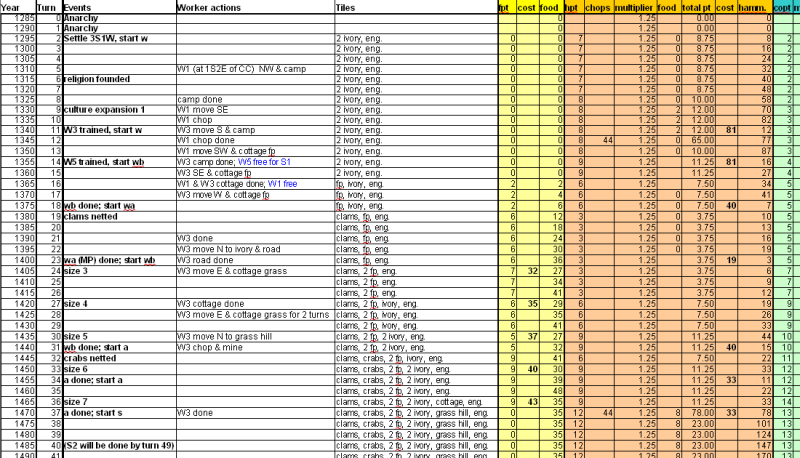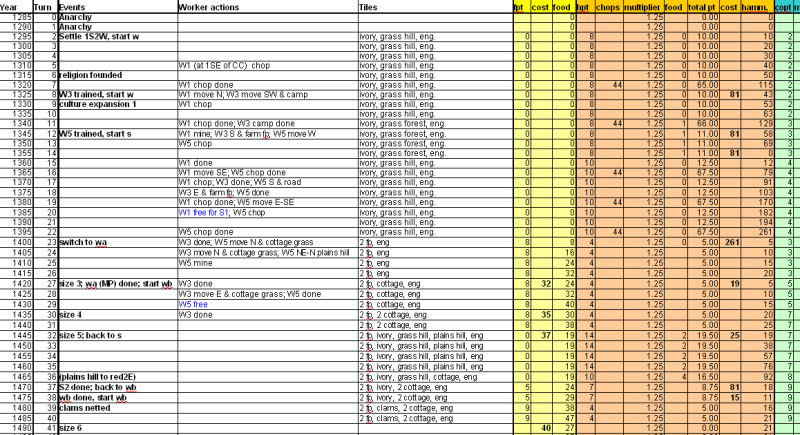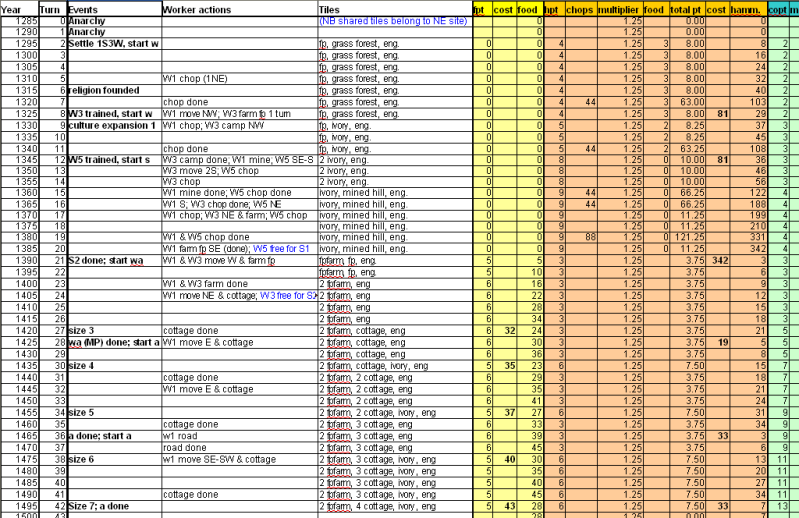Backwards Logic
Emperor Palpatine
My green site isn't wonderful? Uh, settling on a plains hill working three seafood and having at least three other hills to work isn't 'wonderful'? The city can set up as a GP farm mid game once all land is settled then transformed into a production powerhouse, something all other city options currently lack. Personally I think yellow is overrated - any city with 2 deserts in the BFC and a desert hill is hardly wonderful. It's like you're making an accuse just to settle the clams. It has less production early on for settlers which settling 2 E has.
Also settling the other red city 1 S of the iron is no longer an option in my opinion. That ship sailed after turn 0 passed. I believe I mentioned any city that was going to be settled up there needed to be moved that turn to get into position. Delaying a turn to settle a marginal city compared to other options doesn't sound very optimal to me. Plus doing so basically cans any decent spot up where green normally is, barring any additional resources show up.
Back to my other option, the point of this city early on is not for massive hammer potential - I'll concede it doesn't have the food to do so. All it really needs is enough hammer to spit out fogbusters at a reasonable rate and with 12 base at pop 6 (2 ivory @ 3 each and 2 mined grassland hills) it can certainly live up to this task. The capital gets settler spamming duties while this city spits out units. Once the green site is settled and up and running, this city stops working all of the ivory and hills and goes straight to working cottages. I should also point out we're one tech away from replaceable parts which gives a hammer boost to windmills, so it's not like it won't have any production.
Also settling the other red city 1 S of the iron is no longer an option in my opinion. That ship sailed after turn 0 passed. I believe I mentioned any city that was going to be settled up there needed to be moved that turn to get into position. Delaying a turn to settle a marginal city compared to other options doesn't sound very optimal to me. Plus doing so basically cans any decent spot up where green normally is, barring any additional resources show up.
Back to my other option, the point of this city early on is not for massive hammer potential - I'll concede it doesn't have the food to do so. All it really needs is enough hammer to spit out fogbusters at a reasonable rate and with 12 base at pop 6 (2 ivory @ 3 each and 2 mined grassland hills) it can certainly live up to this task. The capital gets settler spamming duties while this city spits out units. Once the green site is settled and up and running, this city stops working all of the ivory and hills and goes straight to working cottages. I should also point out we're one tech away from replaceable parts which gives a hammer boost to windmills, so it's not like it won't have any production.









 Forgive me for doubting you.
Forgive me for doubting you. . But going straight for BL's site is fine too.
. But going straight for BL's site is fine too.